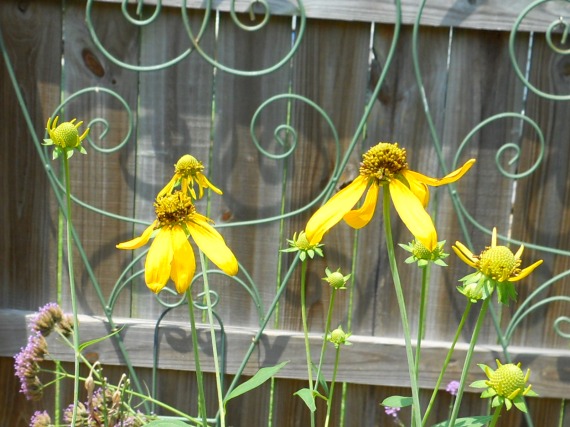
(from upper L-R across & down: Unknown Solidago (background), Pink Chelone, Vernonia or Ironweed and Beautyberry)
I meant to post this yesterday and got caught up with other stuff, so it’s a day late. Well it’s the last full week of August and the garden is starting to push out some early fall bloomers. This is a great year for my Beautyberry with it’s gorgeous purple berries. Mine are just starting to change color from green to a pale pinkish purple color. Another favorite fall bloomer of mine is the Chelone or Turtlehead which is a great shade plant. Ironweed has been blooming since last week in the garden and it really looks great with my Lantana ‘Miss Huff’. It’s new to my garden this season and so far I’m very impressed with this native. Solidagos have been blooming for a couple of weeks now and they are truly a sign of summer coming to a close. I’m ready for this summer to end, it’s been long, hot & dry in the garden. Fall will bring some cooler temps and hopefully some rain. To see more Wildflower Wednesday posts or to join in please visit our gracious host Gail @ Clay and Limestone. Sorry that I’m late with my post Gail.







